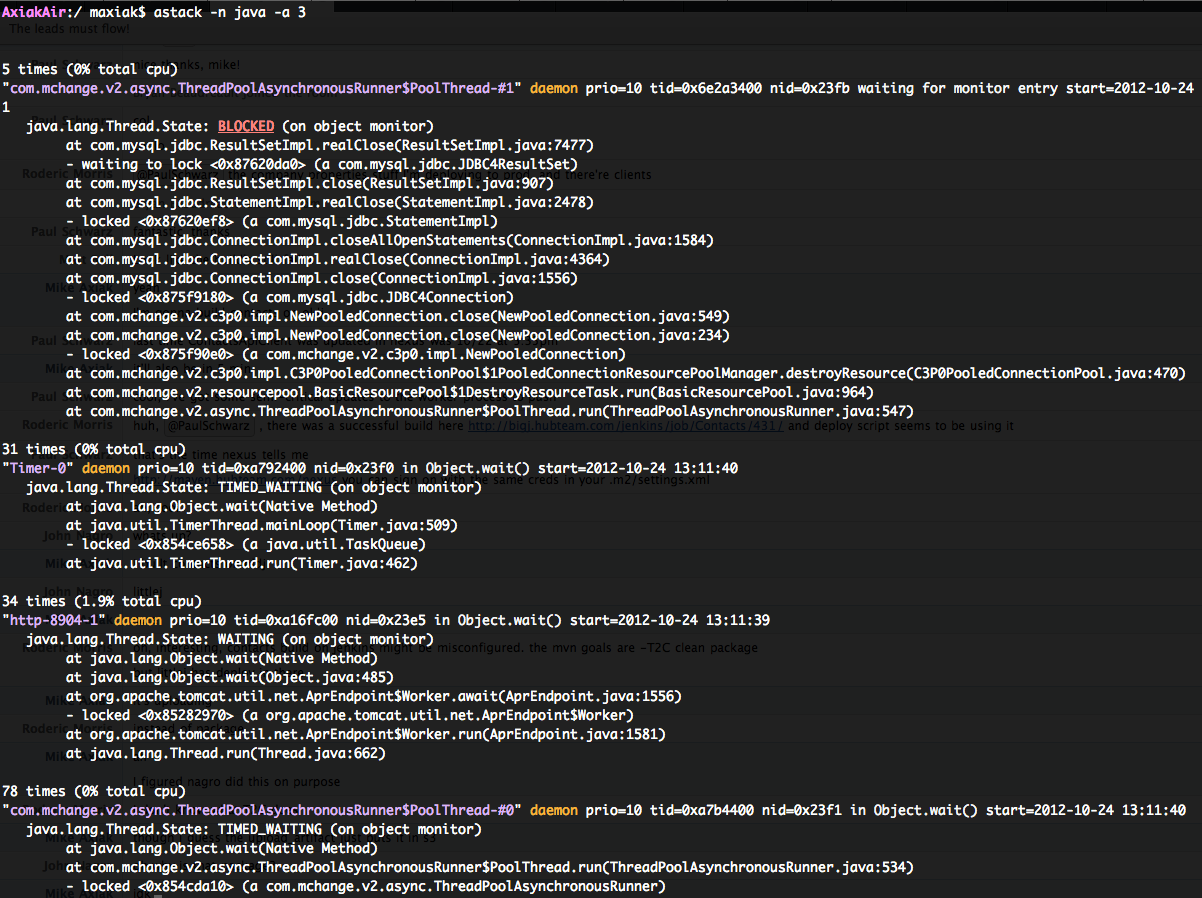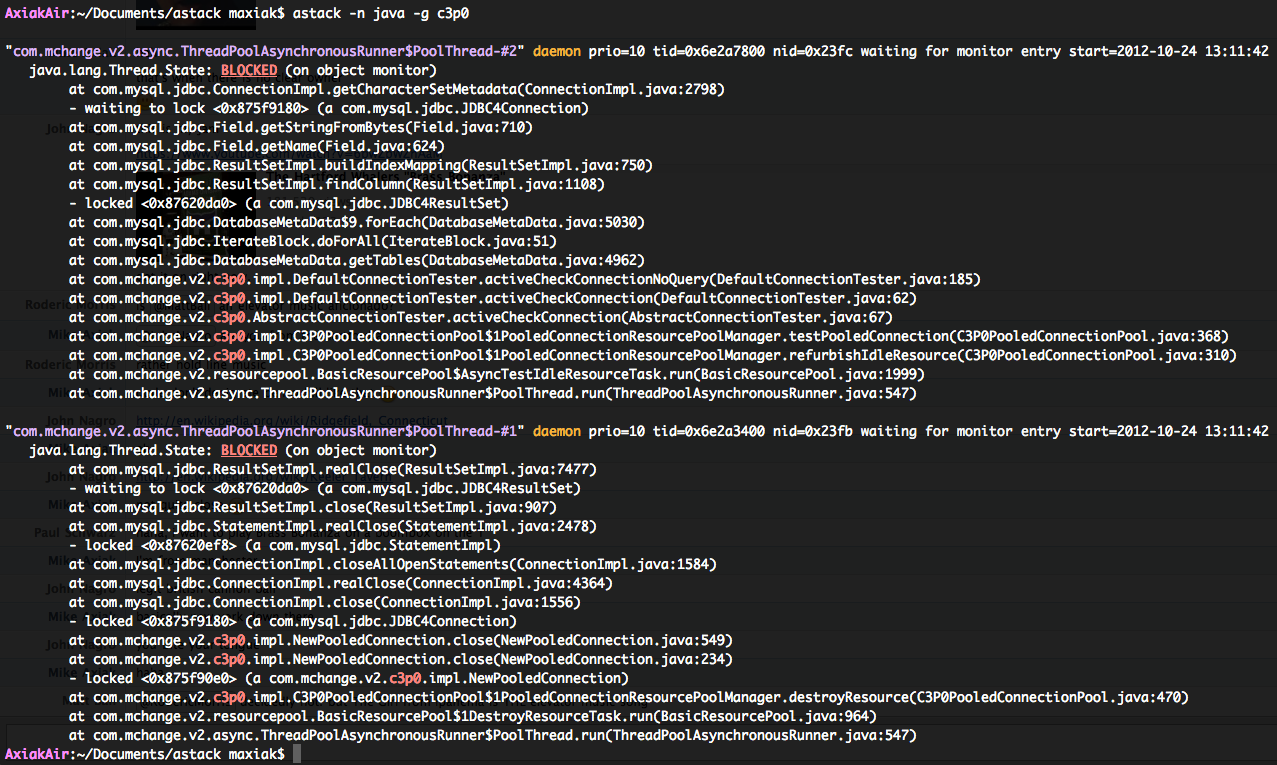Simple stacktrace analysis tool for the JVM
Project description
You’ve heard of jstack and pstack, well this is a new tool called astack.
astack is a swiss army knife of easily getting thread dumps from JVMs and analyzing them from the command line.
Guiding principles:
No complicated network setup (e.g. JMX)
Designed for linux (sorry OS X)
Single file script for ease of copying
Dependencies:
gdb
Screenshots


Synopsis
There are two steps to invoking astack: (1) select which process to inspect and (2) specify what action to take. There are two ways to select which process:
-p PID - Select based on PID
-n NAME - Match based on case insensitive search of command line
Note that name searching does not work if more than one process match.
Once you have a process, there are a few options you can take to get different output:
-r - Just get the raw stacktrace as if you sent a SIGQUIT to the java process and captured the stdout with some extra info.
-a NLINES - Group and count the threads by NLINES of stack and display them in order of occurrence with one representative thread.
-s NSAMPLES - Sample the threaddump a few times and display which ones are most active (most oftenly in RUNNABLE state).
Usage description from the process itself:
Usage: astack [options]
Options:
-h, --help show this help message and exit
-p PID, --pid=PID process pid
-n NAME, --process-name=NAME
match name of process
-r, --raw print the raw stacktrace and exit
-u, --upgrade automatically upgrade
-a AGG, --aggregate=AGG
Aggregate stacktraces (specify the number of lines to
aggregate)
-s SAMPLE, --sample=SAMPLE
Sample stacktraces to the most active ones (specify
the number of seconds)
-i INPUT, --input=INPUT
read stacktrace from file (or - with stdin)
--pretty, --pretty Force colors
-g MATCH, --grep=MATCH
Show only threads that match textTheory of Operation
Rather than hooking into the JVM and asking it for a stack trace via instrumentation, this script takes the approach of sending a SIGQUIT signal and extracting the stacktrace from the JVM while it’s running. The way it does this is by using gdb to temporarily redirect stdout while the JVM is spouting out the thread dump, and switching it back when it’s done. This does mean that it can occasionally get some artifacts if your JVM is rapidly sending output to stdout. In most typical scenarios (e.g. log lines) you wouldn’t see any interference.
The advantage of using this technique is that even when a JVM is under heavy load and cannot fulfill a instrumentaiton approach, the low level response to a SIGQUIT signal is still functional. In most cases, thread dumps are most useful when the JVM is at its limit, so this technique can get interesting results very easily.
Install
$ sudo pip install astackUbuntu 10.04 and up support
On Ubuntu 10.04 and up you’ll need to run this (as root):
# echo 0 > /proc/sys/kernel/yama/ptrace_scopeBugs & Issues
Feel free to file any issues with github’s issues page.
License
MIT License, copyright HubSpot 2012. See the bundled LICENSE file for details.
Project details
Download files
Download the file for your platform. If you're not sure which to choose, learn more about installing packages.












